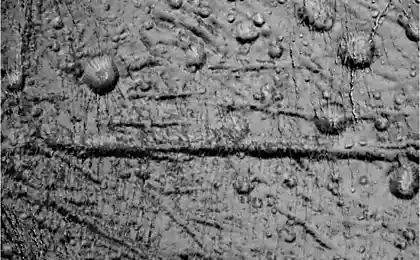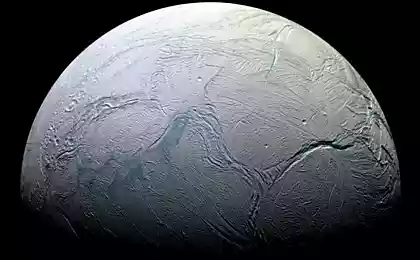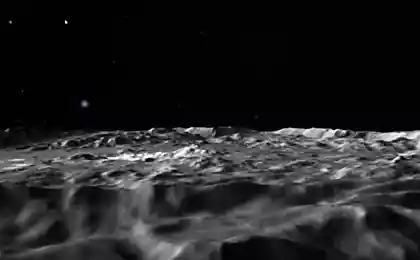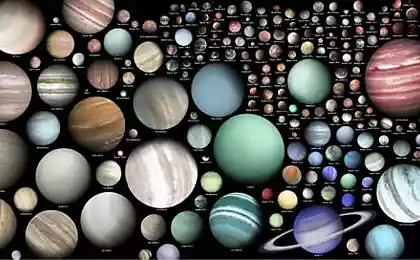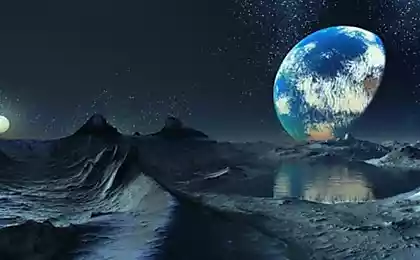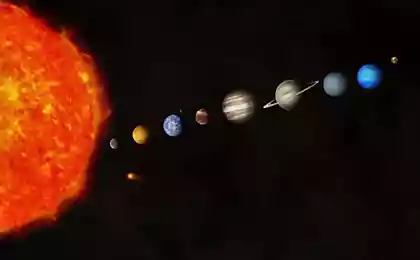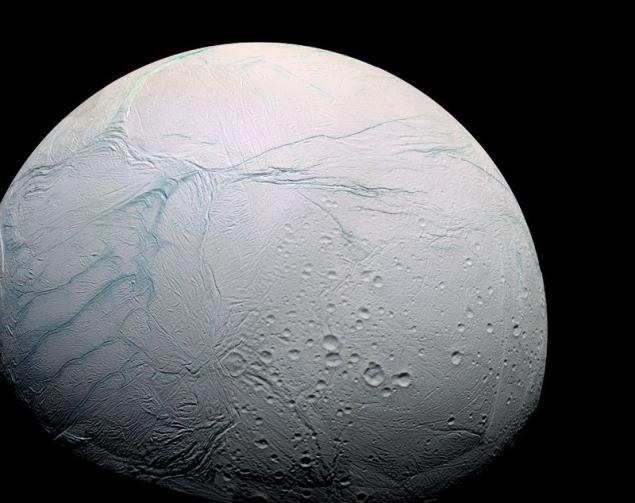
More and more discoveries led astronomers to believe that the farthest reaches of the solar system may be more suitable for life than previously thought. Measurement of the gravitational field of Enceladus, a small moon of Saturn, confirmed that beneath the surface in the southern hemisphere is the ocean. And astronomers believe that theoretically this ocean can be inhabited.
The presence of Enceladus podlёdnogookeana assumed for a long time. Back in 2005, the unit "Cassini" handed shots, which were seen powerful jets of water vapor emitted by entities called "tiger stripes", located near the south pole of a frozen planet. By the way, like geysers recently
обнаружили and Europe , other icy satellite. By themselves, these geysers do not prove the presence of liquid water beneath the ice. This may also be due to the emergence of massive tectonic forces generated gravity of Saturn and lead to the displacement of ice masses and the formation of liquid water emissions.

However, a number of gravity measurements taken "Cassini" from 2010 to 2012, astronomers have confirmed the presence of a giant reservoir of liquid water under the ice surface on Enceladus. And last but not least, was confirmed by the inhomogeneity of the structure of the planet itself: under the ice is rocky core consisting of silicon compounds. Most surprisingly, the layer silicates, covered with water, could form a suitable habitat for life on Wednesday. Perhaps even more suitable than Europe.
The gravity anomaly h4>
Geophysical data collected "Cassini", revealed the presence of abnormal changes in the gravitational field of Enceladus's south pole. Such negative anomalies occur in areas of lower mass rasschёtnoy. Astronomers have purposefully sought in this area negative gravitational anomaly, because there is reduced surface of the planet. But no one expected that the anomaly would be so great. It was much larger than had been predicted on the basis of measurements of the surface.
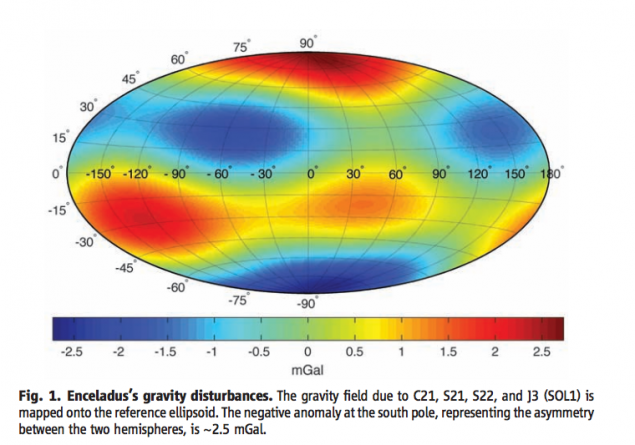
Scientists have suggested that under the surface should be high-density matter. And since water is denser than ice, the only logical explanation was the presence of under-ice ocean.
South Reservoir h4>
Unlike Europe, covering it entirely with under-ice ocean on Enceladus body of water is located just to the south. It extends up to 50 degrees south latitude, about the middle of the distance to the equator. In the South Pole ocean reaches a maximum depth.
Enceladus itself is very small, a diameter of only about 500 km. The diameter of 30-40 km of the ocean, so that by earthly standards, this is a very large lake. The depth of the ocean varies from 8 to 10 km. The volume of water comparable to Lake Superior, the largest of the group Great Lakes.
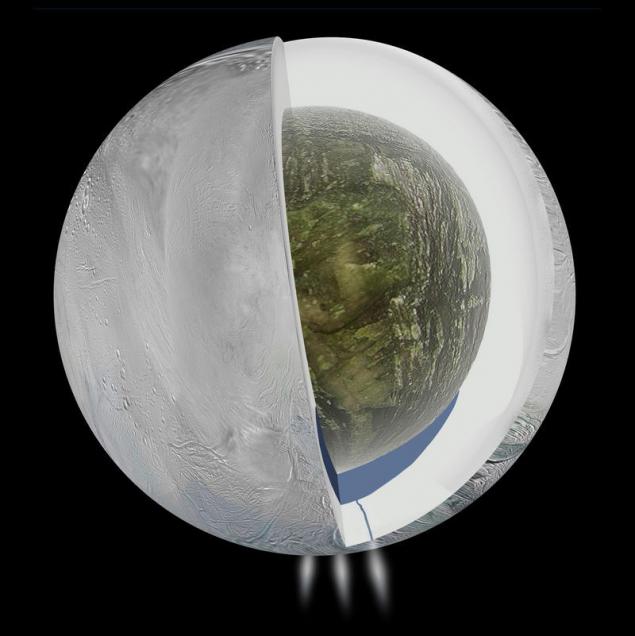
The fact that Enceladus liquid water can exist, was a surprise. The surface temperature is about -180 degrees Celsius. Scientists suggest that the source of energy for the formation of such a volume of liquid water is Saturn's gravitational field. Either this is some sort of its own energy source, the presence of which is not expected in a small icy planet. The same Europe is much larger, almost the size of our moon.
While it is unknown why the ocean is in the south. Possibly, in the area is more intensive heating and bending ice. With regard to the geysers, possibly, their existence is due to tidal forces due to faults which were formed in the ice crust.
The importance of silicon compounds for life h4>
As mentioned, Enceladus has a rocky core of silicate density of 2, 4 g / cm 3 sup>. Silicates are the source of many substances necessary for life, such as phosphorus and sulfur compounds. Scientists have found evidence of the presence of salts and organic molecules in the emitted steam and geysers around the "tiger stripes." The combination of water, silicates and the energy source may lead to chemical reactions. In other words, Enceladus is now a promising place for scientists to search for extraterrestrial life.
Potentially habitable zones occur in the solar system in the most unexpected places. For example, Titan, Callisto and Ganymede may also contain subsurface oceans (yet unconfirmed). Potentially unique обитаемые зоны may also be on the gas giants. Although the probability of intelligent life on such a distant planet from the sun is very low.
Next Steps h4>
Now astronomers are going to learn more about the structure of Enceladus, the exact location, size and shape of the ocean. Measurement of the gravitational field will be continued. In future expeditions expected to be held spectrographic studies of geysers to get more information on the composition of water.
Source: habrahabr.ru/post/218273/





